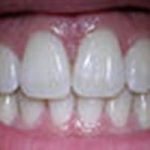Bulimia
Articles, Videos and treatment options for Bulimia
Bulimia Nervosa, also known simply as bulimia, is an eating disorder characterized by recurrent episodes of binge eating (bingeing) as well as a compensatory behavior intended to prevent excessive weight gain. According to the National Institutes of Mental Health (NIMH), 0.6% of the U.S. population will be affected by Bulimia during their lifetime.
You can read our overview of bulimia here, or scroll down to browse the latest articles and videos.

Have you ever heard of the term “diabulimia:”? If you are like many people you probably have limited knowledge of the term, but please read on to find out more about this eating disorder which may affect those with Type 1 diabetes. What is it? Diabulimia is a reduction of insulin intake and it’s done …
Read More

Bulimia is an eating disorder characterized by consuming large quantities of food and then purging it. People with this disorder may not be aware of the dangers of bulimia and the long term, often devestating mental and physical health outcomes that result from prolonged bulimia. The dangers of bulimia can affect many of the body’s …
Read More

The statistics for bulimia are shocking. Although this illness is often well hidden by those who suffer from it, the health consequences are serious and may be life threatening. The prevalence of bulimia, especially among young female women, is an indication of a society overly focused on weight and body image. Young women According to …
Read More

According to the National Eating Disorder Association (NEDA), approximately 10% of people with an eating disorder, including bulimia, are males. Bulimia in men is certainly less prevalent than in women but the life-threatening disease is just as serious regardless of a person’s gender. Bulimia in men is similar in many ways to the presentation of …
Read More

Hair loss is a common symptom of bulimia. Constant binging and purging results in malnourishment which affects the ability of the hair to regenerate and maintain healthy growth. Vital nutrients are lost when a person purges food they have consumed. Under normal circumstances, hair falls out at a rate of approximately 50 to 100 strands …
Read More

The term “bulimia cheeks” refers to the appearance of swollen, enlarged cheeks that may be observed in someone who has bulimia. The condition is sometimes described as “chipmunk cheeks”. The puffiness in the cheeks is caused by inflammation of parotid tissue, and swelling in the parotid glands (the largest of the salivary glands). The parotid …
Read More

Bulimia is an eating disorder characterized by bingeing and purging, often by vomiting in an attempt to control the body weight and relieve anxiety. It is a serious medical condition that can lead to a variety of negative outcomes and medical consequences. This article will focus specifically on bulimia and teeth. There are many consequences …
Read More

Although Bulimia can impact both men and women, females of childbearing years are most frequently affected. Bulimia places the health of both the mother and her unborn baby at risk. Approximately 50 % of bulimic women do not have a regular menstrual cycle. This is a result of poor nutrition, intense exercise, or overwhelming psychological …
Read More
 Eating Disorder Self Test. Take the EAT-26 self test to see if you might have eating disorder symptoms that might require professional evaluation. All answers are confidential.
Eating Disorder Self Test. Take the EAT-26 self test to see if you might have eating disorder symptoms that might require professional evaluation. All answers are confidential.
Find a Treatment Facility Near You
Click on a state below to find eating disorder treatment options that could be right for you.








 Eating Disorder Self Test. Take the EAT-26 self test to see if you might have eating disorder symptoms that might require professional evaluation. All answers are confidential.
Eating Disorder Self Test. Take the EAT-26 self test to see if you might have eating disorder symptoms that might require professional evaluation. All answers are confidential.